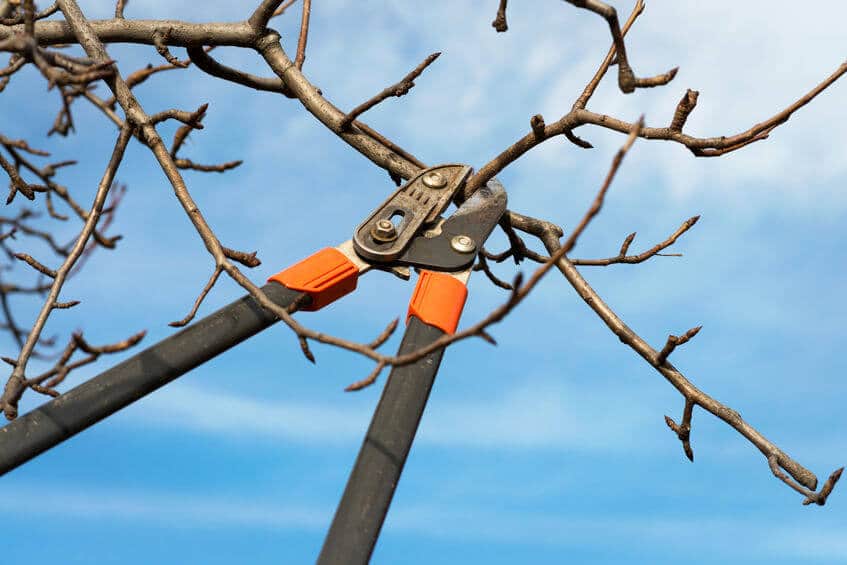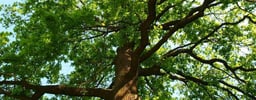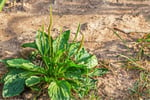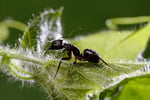Taking care of your lawn doesn’t just mean making sure that the right plants thrive. It’s also about getting rid of the wrong plants! If weeds take hold and spread throughout your yard, they’ll soak up all the moisture and nutrients, starving the plants that you’d rather see emerge. So weed control needs to be a central part of your lawn care strategy, and few weeds are more important to control than spurge and crabgrass. These pernicious plants each attack your yard in similar ways, but if you take the right precautions, you can keep them at bay and protect your property throughout every season.
What is the Difference Between Crabgrass & Spurge?
Crabgrass and spurge are both weeds that have a similar effect on your lawn, but there are some subtle differences that it’s important to watch out for. The most obvious one is appearance. Crabgrass plants tend to consist of coarse green and yellow grass blades that are clumped together. By contrast, spurge has red stems that tend to be hairy and that emerge from a single location. Spurge leaves are dark green in color and have red spots, and they tend to sprout green flowers during the summer. Finally, spurge emits a milky sap that does not appear on crabgrass or most other weeds.
In addition to appearance, both of these nuisances differ in when they tend to grow. Crabgrass usually emerges in the spring, which is why most weed control programs emphasize treating for it during this season. By contrast, spurge thrives in hot weather, so it doesn’t usually show up in earnest until the summer. As a result, your spring weed control efforts won’t have much effect on spurge. This is why it’s so important to distinguish the two weeds as early as possible; only then can you identify the right measures to keep them under control.
How to Get Rid of Crabgrass & Spurge
Because crabgrass tends to germinate and emerge during the spring, the most effective way to deal with it is to use pre-emergent applications during this season. Generally, you’ll have to apply before the crabgrass seeds actually start growing, so you should keep track of where you found this weed the previous year. If you apply the crabgrass control in those areas, the crabgrass should die before it has a chance to become strong, preventing it from damaging your yard.
If crabgrass does manage to make it into the summer, you can kill the mature weeds using a post-emergent application. Effective weed control can be a challenge, so it is recommended that you have a professional handle treatment. Alternatively, you can weed crabgrass, though this is a very difficult process and does not always succeed. In the worst case scenario, you can just wait for the crabgrass to die in the winter, and then apply treatment next spring.
In contrast to crabgrass, spurge tends to be resistant to broadleaf pre-emergent applications, in large part because it doesn’t usually grow during the spring. For this reason, most control programs focus on eliminating this weed during the summer. Luckily, it is far easier to pick spurge than crabgrass, so simple weeding should be enough to eliminate this plant if you do it right. Make sure to wear gloves when removing it, and dispose of dead plants in an isolated location where the seeds can’t spread again. In the event of a very large infestation, you may need to use post-emergent treatment to get the issue under control.
Why Summer is the Best Time for Spurge & Crabgrass Control
Summer is always the best time for spurge control, given that there is little you can do to kill that weed earlier in the year. But even crabgrass control should be extended into the summer, though it starts in the spring. This is because, for both crabgrass and spurge, you can minimize the likelihood and impact of an infestation by making sure your regular plants grow strong. After seeding the lawn earlier in the year so there are no bare areas, water your grass and other summer plants throughout the summer, making sure to water deeply so the roots grow long and strong. Once your grass begins to grow in earnest, mow it regularly with a sharp mower, and leave the grass clippings behind to provide nutrients and shade. Through these summer measures, you allow your grass to grow so strongly that there is little room left for unwanted weeds to take hold.
Senske offers comprehensive crabgrass and spurge control services. From providing pre- and post-emergent treatments to weeding your lawn to giving the grass all the water and nutrients it needs to grow strong, we both prevent infestations from happening and eliminate them quickly when they do occur.
Contact us now to get a free quote and get rid of invasive weeds!










